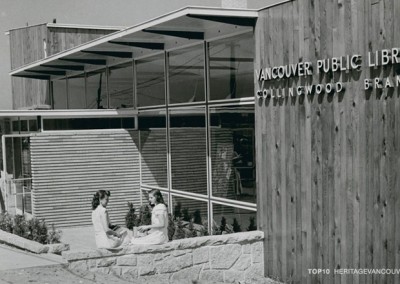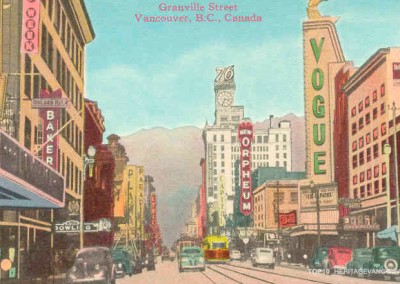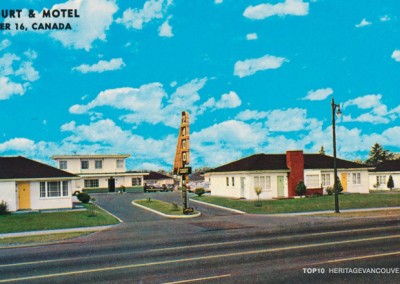This historic neighbourhood, rich in residential, commercial and industrial heritage, continues to deteriorate. In the past year, two more of its heritage homes – 302 and 304 West 6th Avenue – were demolished. It will take swift action on the part of the City of Vancouver if anything significant is to be saved of this historic area’s early history.
* Google map link tracking all heritage properties in the area is at the bottom of this page.
Threat
What is the threat to Lower Mount Pleasant?
One of Vancouver’s oldest remaining neighbourhoods is quickly shedding its historic roots.
The City of Vancouver is concluding a community consultation process to update the 20-year old Mount Pleasant Community Plan. This plan, however, has excluded the semi-industrial area north of Broadway, bounded by Main and Cambie Streets and 2nd Avenue, which still contains a rich variety of early heritage buildings.
This area was zoned industrial many years ago, and is now seen as an area that has further potential for job creation, likely through denser redevelopment.
Few buildings in this area have made it onto the Heritage Register, and even fewer are designated.
Due to Vancouver’s high land values, and changes in zoning, the remaining houses are under increasing pressure for commercial redevelopment, and demolition.
In the last few months of 2009, a number of homes were demolished, including a beautiful, fairly unaltered 1905 home (122 West 8th Avenue), also 1832 Columbia Street, a building known as Molly’s Dinner, a 1904 home converted years go to commercial use, yet still retaining its historical roots and charm. Since most of the houses in this area are not on either the heritage register or designated, demolition permits are freely penned without any indication that a perfectly preserved example of the area’s history is about to become landfill.
Two homes built circa 1906, at 302 & 304 West 6th Avenue, have been recently demolished to make way for a BC Hydro substation, required to support new development in the area. Hydro had offered the houses for $1.00, with the stipulation that they be moved, but no one took up this offer.
A prime example of the area’s endangered stock is the Lindsay Residence (1888), a Victorian at 144 East 6th Avenue near Main Street, and possibly the oldest extant house outside of downtown. Built just two years after the Great Fire, the old monarch sits adjacent to a former scrap-yard for sale as a development site. Clues to her former glory are still visible, including triple-assembly windows, and a shingled main gable with lunette window and original fascia details.
Another grouping of seven houses at Ontario Street and 6th Avenue is a prime example of various residential styles of the early 20th century.
Significance
Why is Lower Mount Pleasant significant?
Mount Pleasant is one of Vancouver’s oldest neighbourhoods, rich in residential, commercial and industrial heritage and layered with numerous and diverse community memories and stories. This was one of the first areas outside of downtown to be developed for residential use, and is a direct connection to, and example of, the development of early Vancouver, mainly from the first extensions of the streetcar lines enabling it’s growth.
There are many surviving historic structures in the area, especially north of Broadway, the part of Mount Pleasant that developed first. There early buildings illustrate the city’s first development.
One example is the Lindsay Residence (1888), a Victorian residence at 144 East 6th Avenue, possibly the oldest house outside of downtown. Another is the J.W. Clark Building (1892) at 2313 Main Street, likely the oldest commercial building outside of downtown. Neither of these buildings is on the Heritage Register.
History
In 1869, the visionary Henry Valentine Edmonds, the clerk of the municipal council in New Westminster, acquired District Lot 200A—all of the wilderness land north of today’s Broadway in the future Mount Pleasant. He was speculating that Vancouver’s unusually fine natural harbour would someday become home to the terminal of a transcontinental railway, since he had witnessed first hand the pandemonium that ensued when San Francisco had been declared a transcontinental railway terminal.
During the 1870s a rickety bridge was built across the narrows on False Creek where Julius Voight had settled, firmly establishing the route south from Gastown that would later become Main Street, and the Hastings Sawmill acquired most of the remaining land in the Mount Pleasant area and chopped down the heavy timber for use in its lumber mill.
In 1887, as Edmonds had foreseen, the railway arrived and created spectacular growth in the newly named boomtown of Vancouver.
In 1888 a new bridge was built south across False Creek and Edmonds began to build streets in earnest. He named the new hillside subdivision “Mount Pleasant” after a village just outside of Dublin, Ireland, the birthplace of his wife Jane Edmonds. With co-owner Dr. Israel Powell, Edmonds began with the portion of Mount Pleasant north of Broadway.
In 1871, Dr. Powell was one of the key people who negotiated the entry of British Columbia into the country of Canada that had been created in 1867. In return, Canada agreed to build the Canadian Pacific Railway across thousands of miles of wilderness to the Pacific coast. Powell bought his extensive acreage in the future Mount Pleasant expecting to make a fortune in real estate after the railway that he negotiated arrived. He did indeed make a fortune.
By the late 1880s, the first houses appeared, giving birth to the City’s first neighbourhood south of False Creek.
By the early 1890s rapid growth had begun and would not let up until 1914 and World War I. The first streetcars reached Mount Pleasant by crossing the Westminster Avenue bridge (now Main Street) to their Front Street barns.
In 1892 Westminster and 9th Avenues were serviced with the Fairview beltline.
In the ensuing decades, industrial uses crept southward, the area declined, and in the 1950s, property-owners successfully petitioned City Council to re-zone the neighbourhood for light industrial development.
Since then, most of the early houses have been replaced by nondescript commercial buildings, but fascinating pockets of the old neighbourhood hang on, including turn-of-the-century houses, apartments and until recently diners.
The City of Vancouver’s current update of the Mount Pleasant neighbourhood exclude this area. Hence, this area is still not on the radar for heritage retention and/or planning.
With the recent development of False Creek South, along with a lack of available development land downtown the pressure for redevelopment is increasing at breakneck speed. It is just a matter of time until we see further erosion of heritage resources in the area.
Position
Heritage Vancouver’s Position
The area is currently being ignored. If the City doesn’t act soon, there will not be anything significant left of this historic area’s early history.
The City of Vancouver should undertake a heritage survey of the area to determine potential heritage sites that have been missed, and flag them for planning attention. This will allow some time to develop possible solutions for the threatened structures in the area.
Creative ideas for retention should be examined. There may be opportunities, as was realized in Downtown South, to group surviving heritage resources within the context of new development.
In several downtown developments, threatened houses have been relocated to create a sense of early neighbourhood history.
View Houses: Lower Mount Pleasant in a larger custom Google map,
that we’ve built to track all heritage properties in the area:


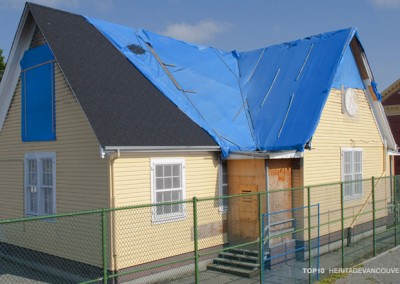
![2. Vancouver Schools: Kitchener Elementary (1914 & 1924) [lost]](http://heritagevancouver.org/wp-content/uploads/2011/11/HVS-Top10-795x440-kitchener-400x284.jpg)
![3. Vancouver Schools – J.W. Sexsmith Elementary School (1912 & 1913) [lost]](http://heritagevancouver.org/wp-content/uploads/2011/09/HVS-Top10-795x440-sexsmith-school1-400x284.jpg)
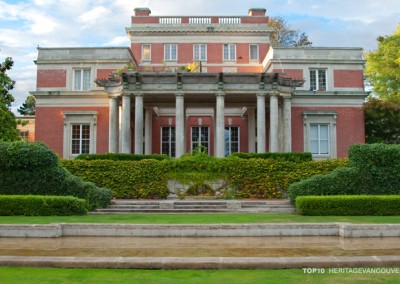
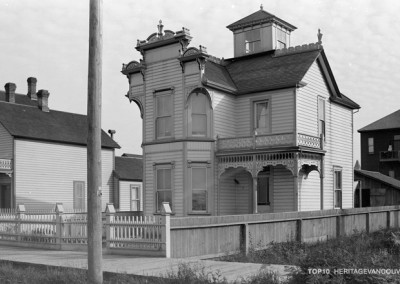
![6. Gordon T. Legg Residence (1899) [lost]](http://heritagevancouver.org/wp-content/uploads/2015/02/2013-west-end-heritage-400x284.jpg)
